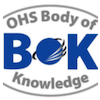Chapter 30: Vehicles and Occupational Road Use
Abstract
Roadways are workplaces for occupational-vehicle users and road workers. Occupational road-vehicle users – drivers of short- and long-haul, light and heavy vehicles, including trucks, buses, vans, cars and utilities – face risks experienced by all road users as well as risks specific to work design and occupational demands. The work environment of occupational road users is atypical, shared with non-work road users, and regulated by both work- and road-related policy. While heavy-vehicle users are a readily identifiable occupational-road-use group and their significant injury burden is well documented, injury and fatality data for other occupational road users is difficult to access and fraught with definitional complexities. Regardless, occupational road use is the most common cause of work-related traumatic injury and death in most western countries, including Australia. This chapter summarises contemporary occupational-road-use exposures and research, and describes work- and road-related risks and models for Occupational Health and Safety (OHS) risk-management intervention.
Keywords: road, vehicles, work, OHS, safety
First year of publication: 2012
Current Version: 2019
Chapter 30: Vehicles and Occupational Road Use
Table of contents
| 1 | Introduction |
| 1.1 | Definitions |
| 2 | Historical context |
| 3 | Extent of the problem |
| 4 | Understanding OHS issue related to occupational road use |
| 4.1 | Modern occupational vehicle-usage conditions |
| 4.2 | Generic occupational road-vehicle-use risks |
| 4.3 | Long-haul and heavy vehicles |
| 4.5 | Occupational light vehicles |
| 4.6 | Roadside workers (road maintenance and construction) |
| 5 | Legislation and standards |
| 6 | Control of hazards related to vehicles and occupational road use |
| 7 | Implications for OHS practice |
| 8 | Summary |
Rwth Stuckey BAppSc(OT), GDipErg, MPH, PhD
School of Occupational Therapy, LaTrobe University
Rwth undertook her doctorial studies in Epidemiology and Preventive Medicine at Monash University, examining risk and predictive factors in occupational light vehicle-use and related work-driving regulation and policy frameworks. She has worked in occupational rehabilitation and ergonomics for more than 35 years and as an OHS consultant since 1982. She was the OHS and Injury Management Adviser at the Victorian Transport Accident Commission until 2009. She is a member of the National OHS Regulatory Research Consortium and works as an OHS consultant and lecturer in OHS and ergonomics at Monash and Latrobe Universities.
Peer reviewer
Dr Peter Cairney, MA(Hons), PhD Principal Research Scientist
Australian Road Research Board
Learning Outcomes: Physical Hazards: Vehicles and Occupational Road Use
The OHS Body of Knowledge takes a conceptual approach which enables it to be applied in different contexts and frameworks.
To optimise its value for education and professional development learning outcomes have been developed for each technical chapter in the Body of Knowledge.
The learning outcomes as described give an indication of what should be the capabilities of an OHS professional; it is up to those developing OHS education programs, OHS professionals planning their CPD or recruiters or employers selecting or developing people for the OHS function to consider the required breadth vs. depth .
Please read the section on using the learning outcomes before delving into the leaning outcomes of the individual chapters.
The numbers against each learning outcome refer to the chapter number of the BOK download page. No learning outcomes have been developed for the chapters considered introductory or underpinning knowledge (that is chapters 1, 2, 3, 4, 5, 6, 7, 1, .13, 14, 15.)
Archived Chapter 30 Published 2012

